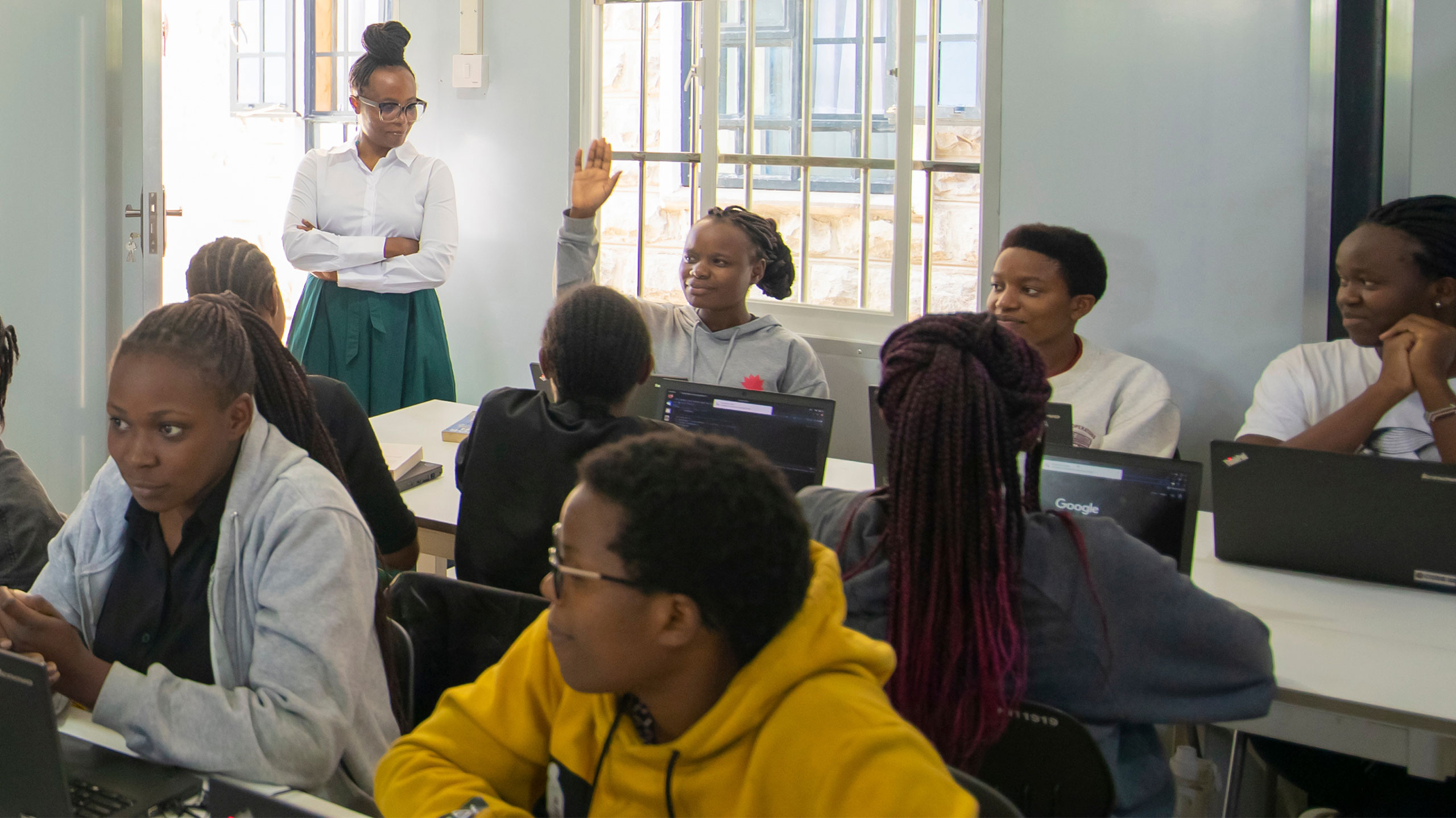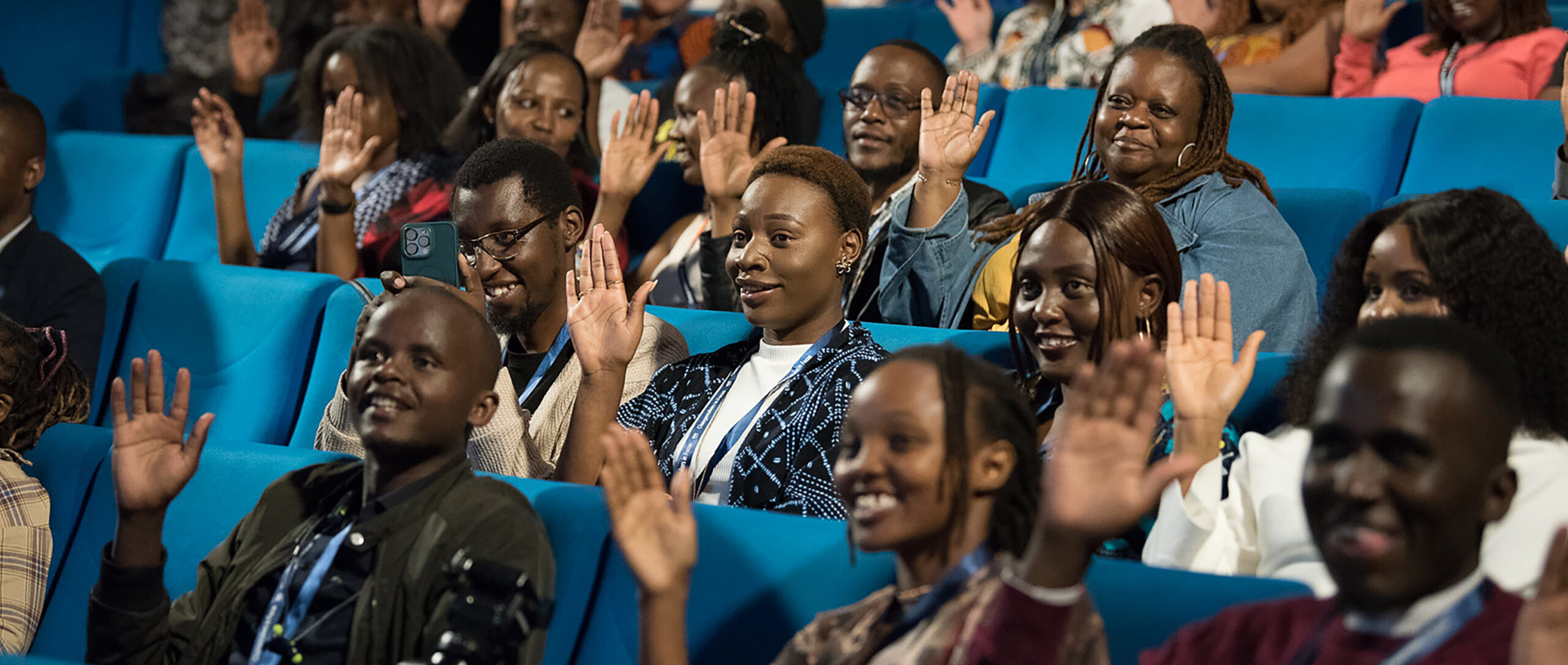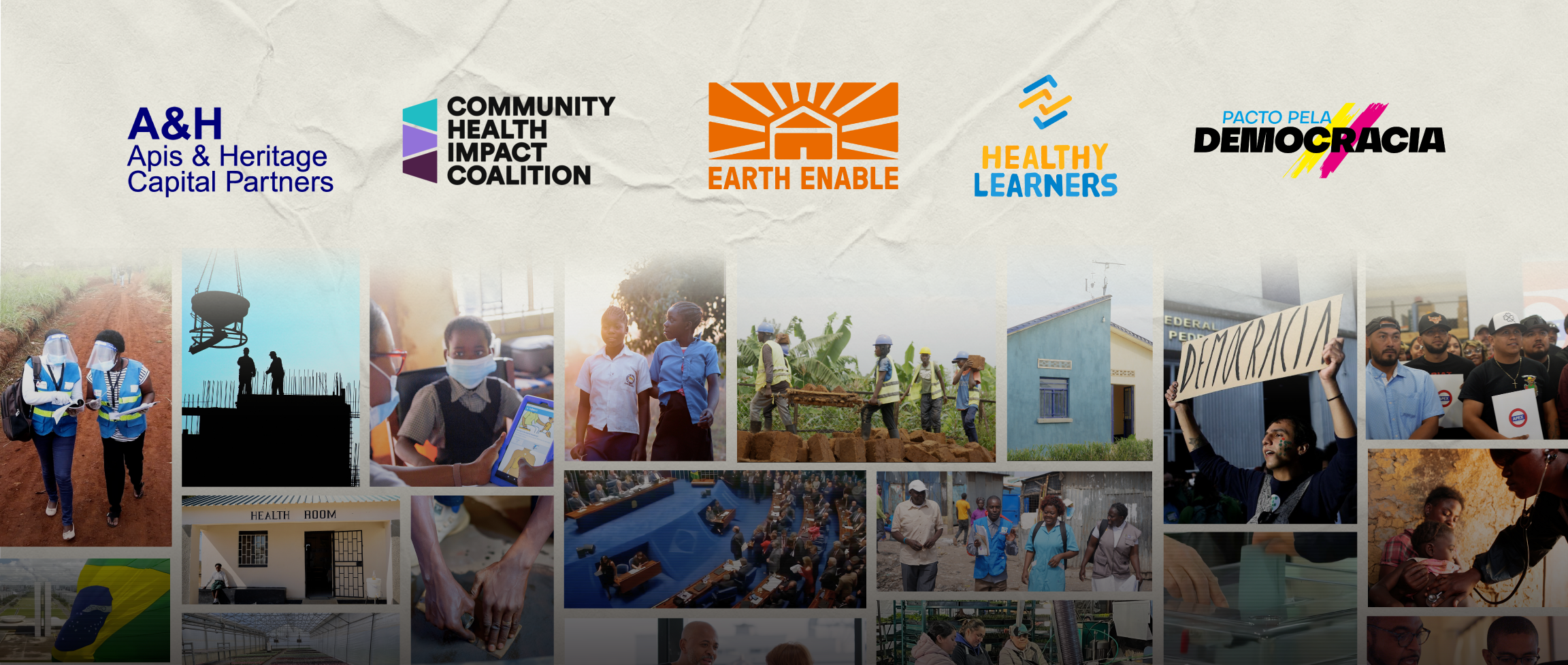How Traditional Philanthropy’s Obsession With Scale Too Often Excludes African Innovators
Power imbalances and donor pressure to grow too fast can hinder African-led organizations’ long-term success and sustainability. Together, we can abolish the traditional scale formula and achieve higher impact.
“Growth is good.” It’s an adage that underpins modern society. Today’s philanthropists take big bets on social ideas with guidance from Silicon Valley’s venture capital playbook—invest, scale, repeat. However, traditional scaling strategies are not always the most suitable or sustainable for locally-led organizations and their innovative interventions in many global contexts. And in an African context, the pressures to follow a social change formula that does not fit intensifies the complexities of scaling.
In April 2022, The African Visionary Fund hosted an Ecosystem Event at the Skoll World Forum, Redefining Scale: A Smarter Way to Scale for Greater Impact in Africa. A larger conversation that we are having within our network of donors and social entrepreneurs prompted this session. The funder obsession with scale is one that is rooted in multiple dimensions of the power imbalances that shape philanthropy, to the detriment of communities across Africa. Funders have acknowledged that philanthropy has a power imbalance problem that disadvantages African-led organizations and the visionary leaders who run them. However, adopting transformation strategies that change these systems requires a more nuanced examination of the trends and patterns that cause inequitable relationships to emerge.
We asked our partners and peers to share their perspectives on how to address philanthropy’s scale obsession, how scaling can be redefined to better serve communities, and why viewing scale through an equity lens could help break the unjust status quo. These are their insights—in their own words.
Redefining Scale
There is no one way to define scale. It can be understood as scaling wide for larger reach, scaling deep for sustainable and transformational impact, or scaling to change systems through advocacy and policy to solve underlying causes. For many African-led, community-centered organizations, scale is multidimensional. It requires additional and invaluable resources such as contextual knowledge, strategic planning, lived experience, and uniquely tailored and localized innovations. Scaling the right way means prioritizing the depth of impact as much as, if not more than, the breadth of reach, and recording the ripple-effects of indirect impact of community-rooted interventions.
“For a skills training program like ours, scale is based on how deep we go in terms of ensuring that a young woman that graduates from our program gets a good job in a competitive market. Ensuring that this young woman is able to provide the basics like food and shelter in their home. Even deeper, ensuring that she can eventually join a higher income bracket and support herself and her family, like by paying school fees for her siblings. What if she ended up moving her family from an informal settlement to living comfortably? For us, scale is about breaking the intergenerational cycle of poverty, even in just one home.”
-Linda Kamau, Managing Director & Co-Founder, AkiraChix, a Kenya-based nonprofit bridging the gender gap in the tech field
Furthermore, on a continent where socio-economic challenges and their effects on individuals intersect, it is critical that the scaling process is regarded as important as its outcomes. For example, poor health systems coupled with gendered social norms can limit women’s access to formal reproductive healthcare and the tools traditional birth attendants require for safe deliveries in their communities, leading to high levels of infant mortality. To solve these interconnected cycles, innovators must intimately understand what elements of their interventions are crucial to achieving the intended positive change, and how their model can be successfully transferred to other communities to transform the system. Community and stakeholder participation is key to finding the most effective scale pathways, and African-led organizations are often keenly aware of this due to their proximity to the problem.
“Scale is about bringing the benefits of a solution to the most people, at a cost that is manageable for the ultimate duty bearer. For us, the duty bearer is the government. We ask questions like, what would it take for the government to implement this? Where can it work? What context can support its delivery? And, ultimately, at what cost can it be delivered so that its benefits can reach the most people?”
-Julius Mbeya, Co-CEO, Lwala Community Alliance, a Kenya-based nonprofit catalyzing communities to tackle the drivers of poor health
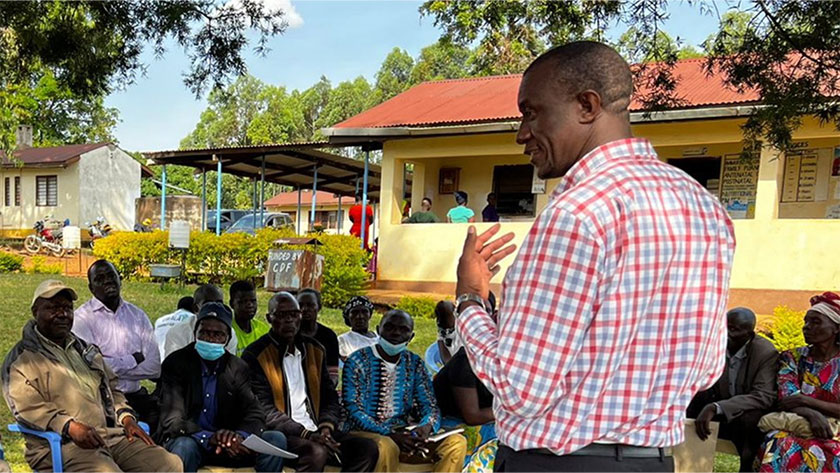
Indeed, scaling is a huge time, capacity, and resource investment, and should be contextualized to meet the long-term needs of the specific groups and communities that are ecosystem stakeholders. Yet, many funders often define scale using limited dimensions, typically using these definitions as a measure of an organization’s overall impact. Prioritizing breadth means sacrificing depth and missing opportunities to change the underlying symptoms of ailing systems, which comes at the detriment of partners and people on the ground.
Why Scale Fails
Scaling strategies have the potential to be either a boon or bane to the incredible innovations led by proximate leaders in Africa. It is often who sets the global development agenda and prescribes the scaling strategies that dictates which way the pendulum swings.
“Scaling strategies tend to work best when they are locally-rooted and locally-led, yet we know that a majority of philanthropic grants and bilateral aid is channeled through Northern-headquartered or foreign-led organizations. If you are a funder from the global north having conversations with only northern-based or -centered organizations around achieving impact at scale in Africa, you are missing a real opportunity to be a part of lasting and meaningful change.”
-Melizsa Mugyenyi, Chief Executive Officer, Graça Machel Trust, a Pan-African advocacy organization influencing policy and practice towards socio-economic justice
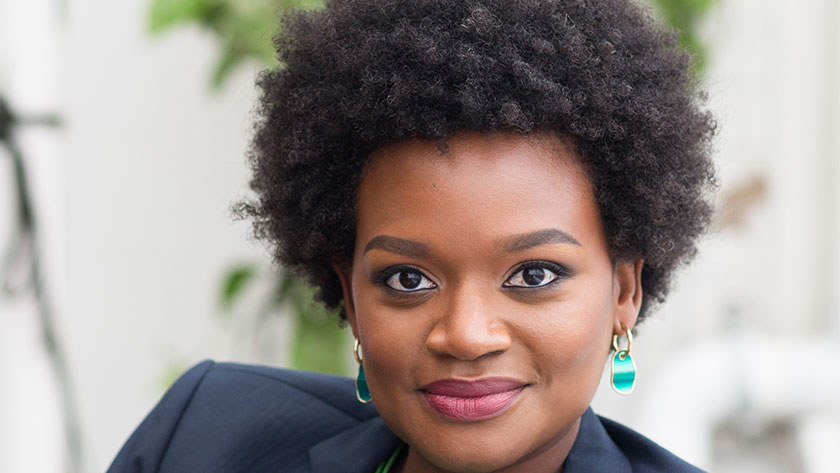
But the philanthropy community isn’t solely to blame. They operate within a predetermined system and adhere to a universal development framework that prioritizes serving the maximum number of beneficiaries. Frameworks like the United Nations’ Sustainable Development Goals and its predecessor the Millennium Development Goals are useful tools to understand the breadth of the world’s shared socio-economic challenges and goals for their eradication, but they have also narrowed the field for organizations innovating beyond their parameters.
“Globally, we are led by indicators that have already been infused with a scale mindset. For example: by 2030, X number of people should be pulled out of poverty. As that tone has been set, our governments and organizations cling to the thinking of putting numbers to a timeline to achieve impact. We need to map out solutions away from all these frameworks if they hinder real progress.”
-Willie Mpasuka, Executive Director, Rays of Hope, a faith-based nonprofit transforming primary school education in Malawi

Innovators Under Pressure
A pervasive consequence of this global agenda-setting is that it influences how success is measured. In what Mona Mourshed calls “metric monomania”, many funders then define scale through their own rigid, once-size-fits-all program design that prioritizes reporting high impact metrics. As a result, funders set unrealistic criteria. They unknowingly put pressure on local organizations to rush to scale in order to attract much-needed funding, when in fact slower growth may be the better way to ensure high-quality and enduring impact.
“A lot of times we get funders that come to us and say, we like the work that you do, let us know when you are able to scale to reach a million people. If we focused on scale by numbers, we would have to lose the quality of our interventions. So, we lose out on funding instead.”
-Molade Adeniyi, Chief Executive Officer, WAVE, a Nigeria-based work-readiness training and job matching organization
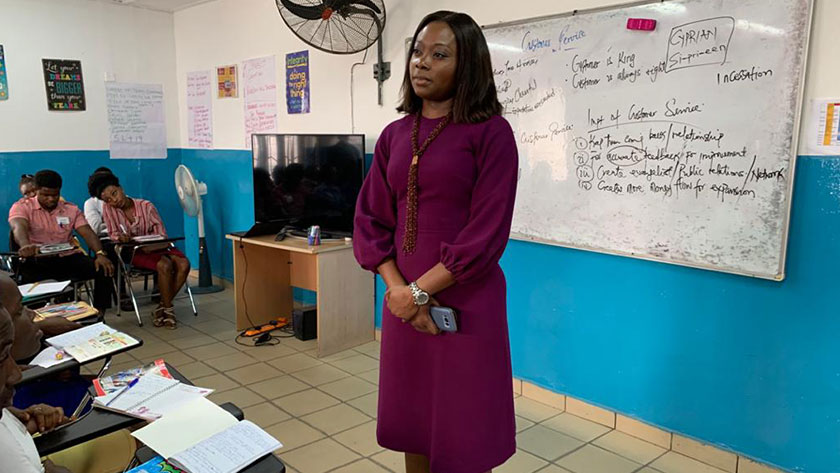
“One of the metrics that some funders will adopt when assessing prospective grantees is total budget value vs the number of people served. This can be a rudimentary equation, as it glosses over so many factors of what it takes to positively impact the life of a person.” –Melizsa
“You walk into a room and the first thing a funder asks you is, how many people do you serve? How much is your budget? Their decisions are built around these questions, forgetting to ask, how many lives have changed since you started working on this?” -Willie
“In Africa, we have a graveyard of great innovations that could have been transformative had they been given the time to grow, mature and get where they needed to be. However, in the rush to demonstrate impact at scale quickly and the organizations not being mature enough to handle the rapid growth, they ended up dying.” –Julius
Another unintended consequence of the rigidity of funders’ internal funding criteria is that it is often risk-averse, and mismatches in eligibility requirements cause donors to miss opportunities to invest in disruptive scaling ideas that shirk tradition. In truth, unconscious racial biases are often the foundation of funder assessments of risk. A lack of trust not only devalues grassroots social entrepreneurs’ talent, knowledge, and experience in serving their communities, it also severely constrains the development of groundbreaking ideas.
“For us, scale is about creating opportunities that test solutions and innovations that get progressively larger. We have used the technology we have and the research we are doing to create a rigorous but flexible approach towards developing a sweet spot of interventions that can change how education is delivered. For an organization like ours that is “risky”, not everything we’re doing is attractive to funders. When you look at for-profit innovation circles, there’s an understanding that high risk can translate into high returns. But when it comes to social entrepreneurship, there’s a lot less willingness to partner with innovations that are high risk but with potential for high impact.”
-Solomon King Benge, Founder & Executive Director, Fundi Bots, a social enterprise improving science learning across Uganda
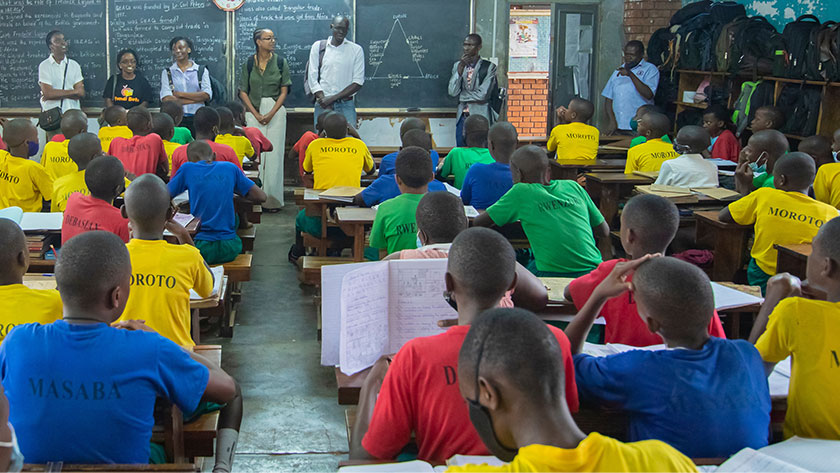
Scaling Better
So what can the philanthropic community do to take action in re-evaluating their ideas and definitions of scale? Here are some insights on how funders and their partners on the continent can build stronger relationships so that initiatives focus more on deep and long-lasting societal impact.
Alleviating the Pressure to Scale
A slow and steady approach to supporting visionary African organizations is required for more equitable partnership; one that allows innovators the space and time to brainstorm, test, pilot, validate, pivot, and entrench interventions before adopting a scaling strategy.
“There’s an assumption that proof of concept needs to happen in a given timeframe. However, the problems we are solving have not been solved before. It’s good to have funders who are open to helping you figure out and define your model. At AkiraChix, it has taken six years to get comfortable with our model and figure out what works.”-Linda
“For us, the patience we have experienced with our funders and the flexibility of that funding—unrestricted funding—has enabled us to grow the idea, move incrementally, refine the model, and get to the point where we are able to say, this is now implementable at scale.” –Julius
Rethinking Numbers-Based Funding Eligibility Criteria
The pressure to scale too soon often comes from numbers-based funding criteria constraints such as beneficiaries reached. However, those numbers represent people, and decisions made by the organizations that serve them can make a real difference in determining the trajectory of the rest of their lives. The quality of an organization’s impact should never be sacrificed for the sake of a more impressive-looking return on investment. Work needs to be done to probe why funders have set their eligibility criteria, so that new solutions can emerge on how to revise them to consider and support the often-overlooked visionary organizations innovating for high impact on the ground.
“Currently, funders are ruminating on the fact that the relationship between funders and grantees is one-dimensional. This requires constant internal reflection on their own program design, and interrogating its relevance in the current context it is in.” -Solomon
Funders can also immediately abolish internal strategies that automatically exclude organizations based on their size—budget or otherwise. Some organizations will never grow beyond a certain point, because they don’t need to. Their communities are best served with smaller-scale, deeper-impact interventions, and there are many other ways to measure their effectiveness.
“We can use metrics around the strength of partnerships between organizations driving a scaling solution and those players who will embed the solution in local systems long-term. It’s also interesting to look at how a community responds to an intervention, specifically measuring how receptive local communities have been. Similarly, measuring community ownership of an idea could be telling of impact.” -Melizsa
Embracing Alternative Growth Strategies
No matter the growth model chosen, high social impact is a scaling strategy’s bottom line. This includes the impact made on the livelihoods of families, communities, and society at large. Both donors and social entrepreneurs can do more to ensure that the impact on indirect beneficiaries is not diluted in measurement and messaging, and there is much to do to provide more information about the multiplier effects of innovative solutions.
“Through our replication model and our growth partners, we have been able to reach an additional 60,000 people. We are able to share our best practices with other organizations and they are able to take them into their communities, implement those best practices, and record the same impact as we have. It’s unrealistic to record some of the numbers that some funders are asking for. However, if we spend more time learning what works, we can begin to have not just the numbers, but also the impact, which is what is most important.” -Molade
Taking Risks and Trusting the Process
African organizations desire to grow and reach as many people as possible. But, the assumption that social value can only be created by going bigger hinders real impact. If the ultimate goal is to serve and impact diverse people with varying realities and needs on the ground, then more donors should grant unrestricted funding that empowers local social entrepreneurs to test new ideas and growth models that will have long-lasting benefits.
“We have survived and thrived through our flexible funding partners. It would be great to have more funders who trust the doers and give them the leeway to innovate with the best intentions for the communities they are deeply invested in. Funders can push boundaries and have dynamic, multi-faceted and trust-based relationships. One of the questions that I pose to funders is, how much risk are you willing to take?” -Solomon
Keeping an Open Dialogue
More open and honest dialogue between funders and social entrepreneurs—about patient capital, indirect beneficiaries, depth of impact, impact over time, methods of measurement, trust, and flexibility—can help mitigate the relational disconnect and help offer new solutions that are effective for both partners. Perhaps this sentiment is best summarized by Willie Mpasuka’s final reflection:
“Can we scale power? How willing are funders to sit at the table with doers, be vulnerable, and talk about the big elephant in the room?”
Banner image is of Linda Kamau working with students in Kenya, image: Petros Teka www.petrosteka.com
